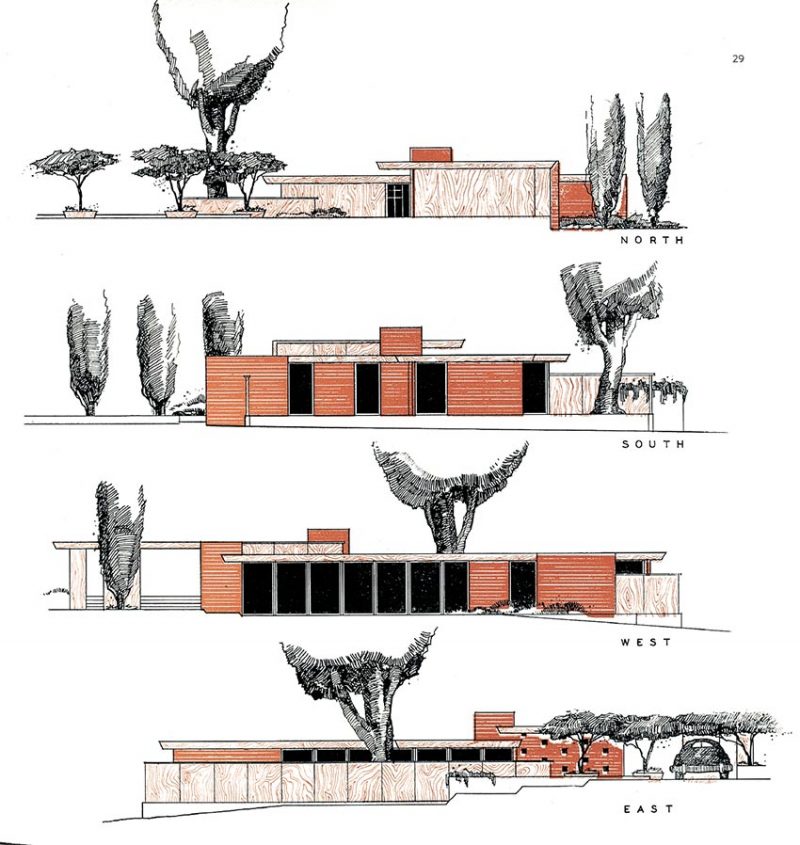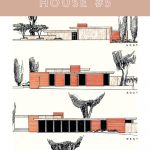The Case Study Houses were and are an illustration of modernism’s intended audience—the masses. These homes were meant to change the way we look at residential design and forever alter the way we live. Built or unfinished, preserved or lost, join us as we take a closer look at each of the iconic designs that carry the name “Case Study House.” In this installment we look at Case Study House #5.
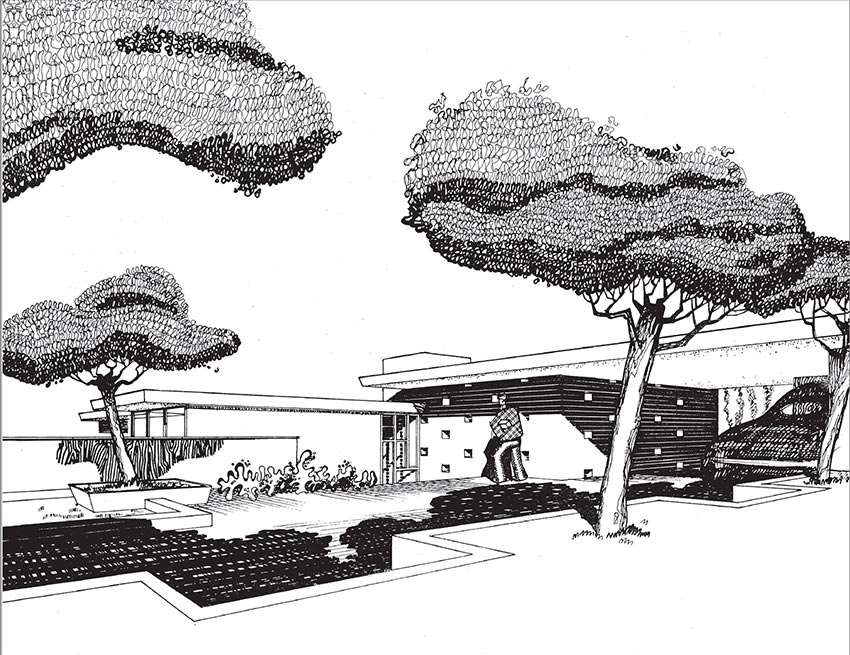
Rendering of the carport and the gated garden area where you could then access the rest of the home.
Meet House #5
This unbuilt design, introduced in the September 1945 issue of Arts & Architecture, was an extreme example of outdoor living in Southern California with a floorplan centered around and inside of a large loggia (which is essentially a porch). Designed by Whitney R, Smith, A.I.A., the home eliminated any unnecessary features. “You will find no entry, no halls, no breakfast nook. The plan takes order only from its own purpose,” the original article states.
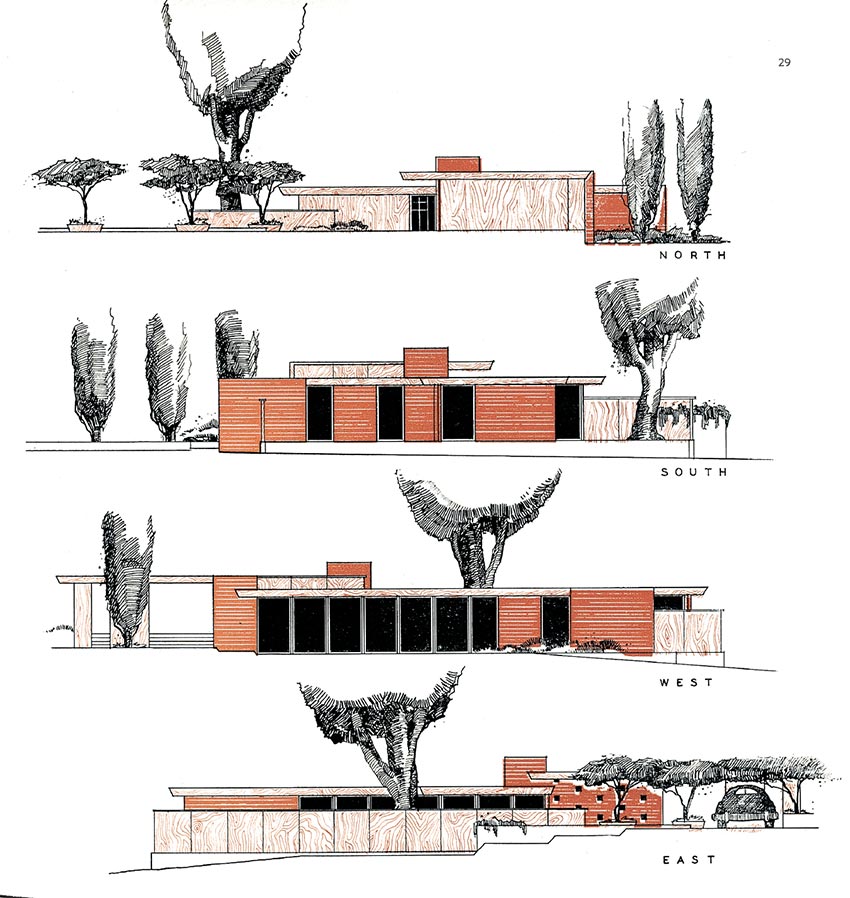
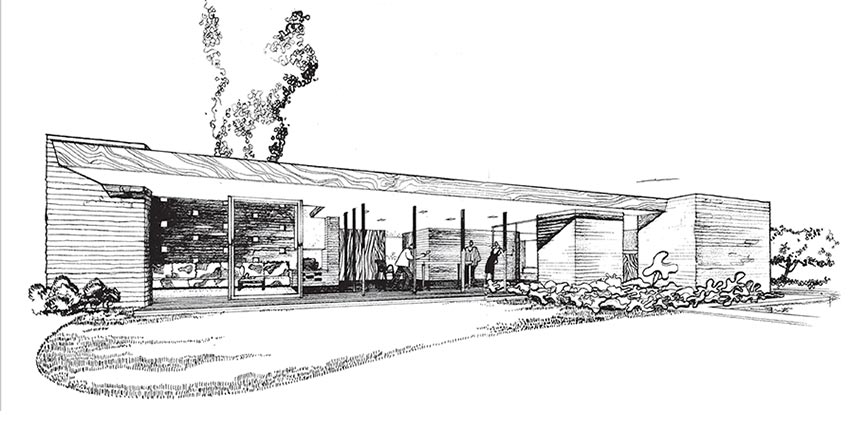
The central open-air loggia is seen in the middle with the lounge to the left. Planned with flexibility for the social areas, certain spaces could be opened up or closed off as needed.
The Loggia
Upon entering the carport, one would continue through a covered walkway and down a few steps to reach the garden area. Now in the “central social loggia,” the lounge and dining area were directly accessible, with the kitchen nearby. Roller screens would allow the open loggia to become a screened room. The bedrooms are more sheltered, but still had direct access to a walled garden.
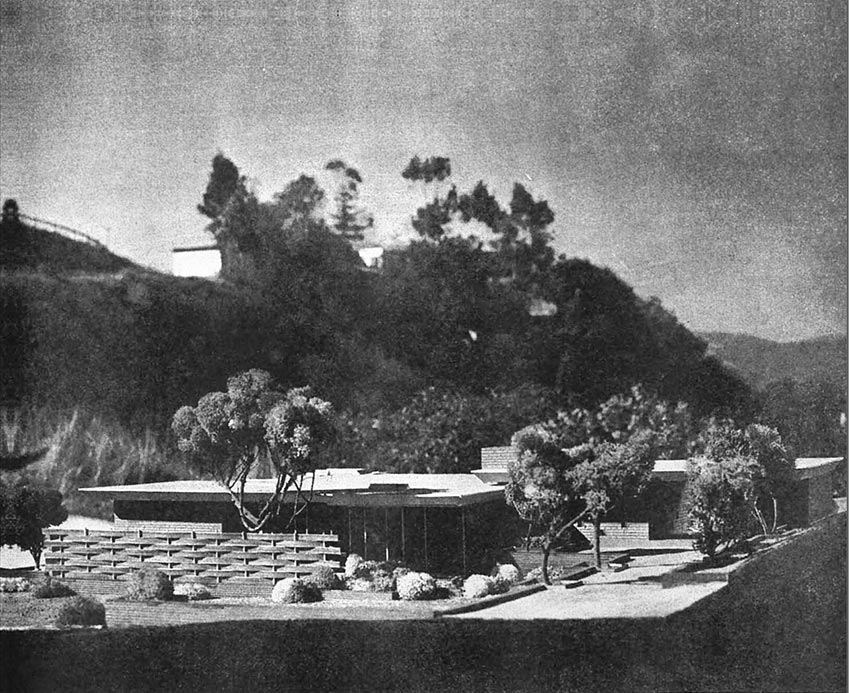
Model showing the East elevation against the hills, illustrating what the home would look like in its natural surroundings.
Most easily visible from the floor plan or aerial view of the model, you can see that the home was arranged using “a primary pattern of squares, related and interpenetrated, but each enclosing unit defining a zone for activity complete in itself.” A unique feature was the idea of manipulating certain rooms as needed by closing up or opening the square. “ … The central area for family living and entertaining is articulated. The lounge, loggia, and kitchen-dining areas can either be isolated from one another or, by sliding back the glass doors, opened to each other and to the garden.”
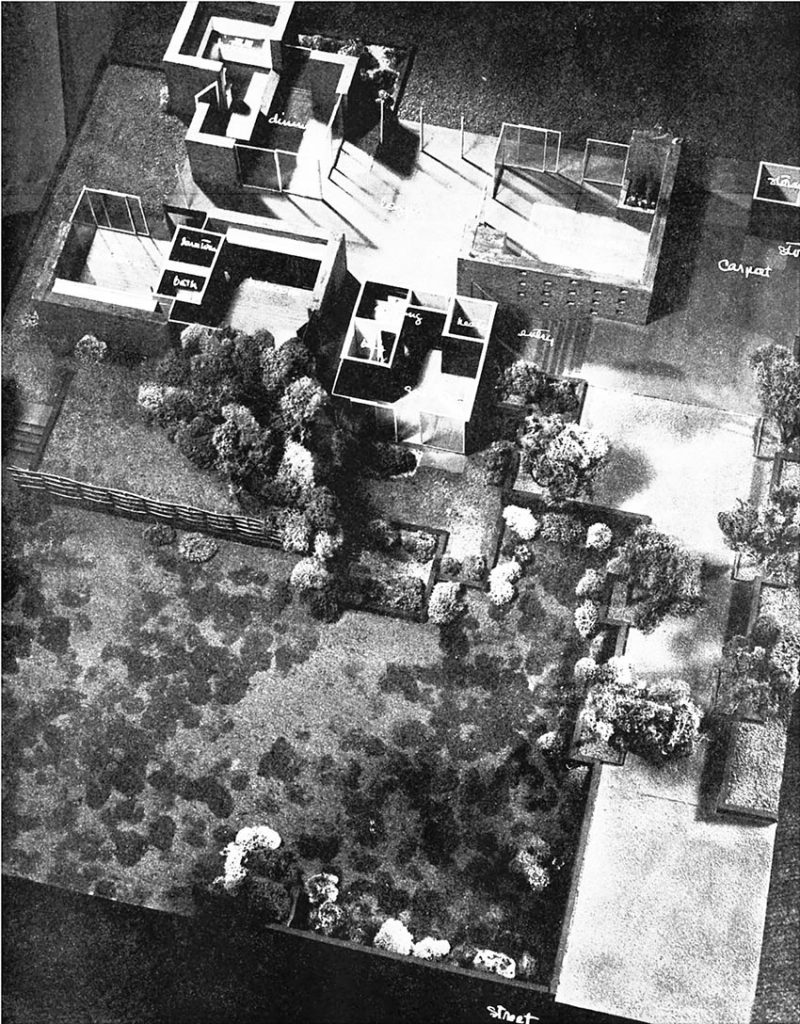
Looking above and into this model, you can clearly see the interconnected square areas and how they can open or close depending on the family’s needs
Case Study House #5 Materials
Case Study House #5 was planned to be built with a Latisteel structural framework to hold up to earthquakes. Adobe brick was to be used in combination with wood and glass. In the car shelter, loggia, lounge and dining areas, brick was the flooring of choice, while a more resilient cork was planned for the rest of the interior areas.
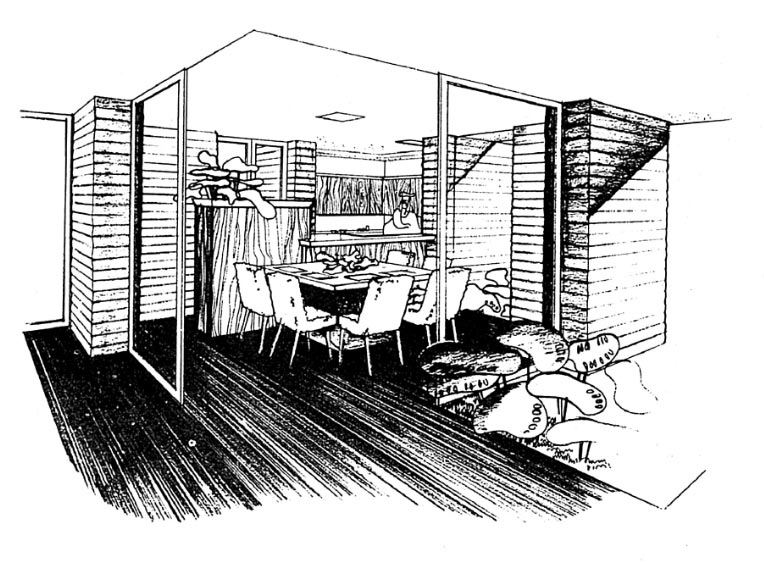
The home was never realized, mostly because of the wildly different floor plan with its main social areas located in the loggia. Case Study House #5 was extremely experimental and perhaps just ahead of its time!
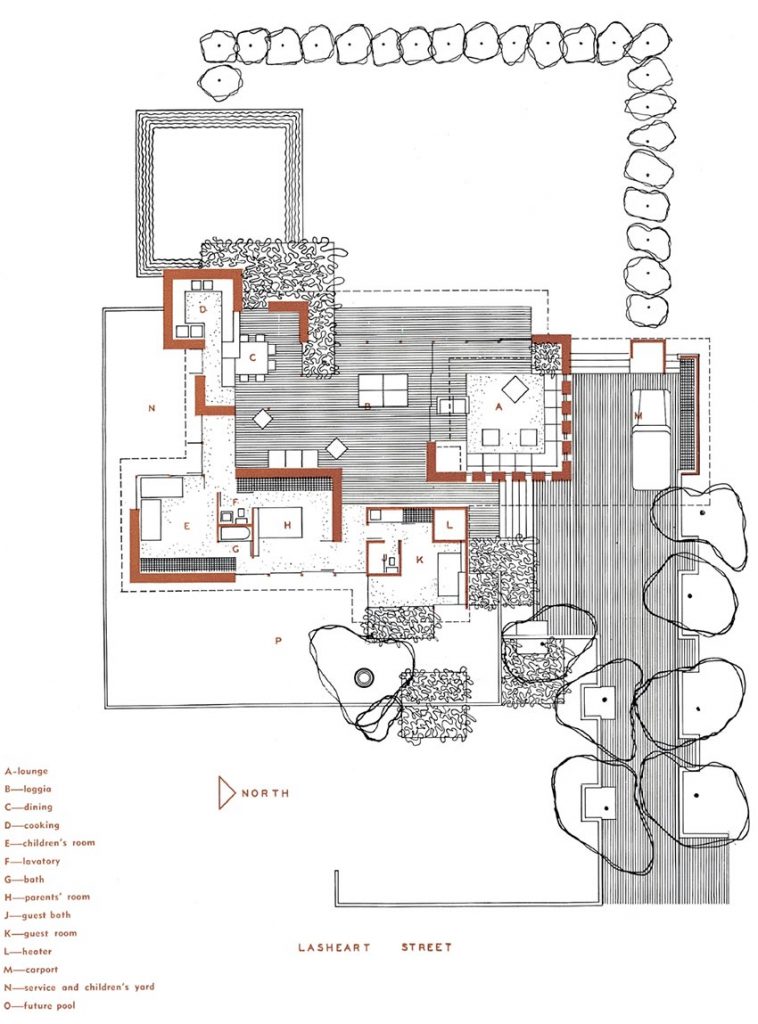
Want to brush up on the other Case Study Houses? Check out this overview of Case Study House #4 or check out this newly renovated Case Study House #26.
And of course, don’t forget to follow us on Instagram, Facebook and Pinterest for more Atomic Ranch articles and ideas!

